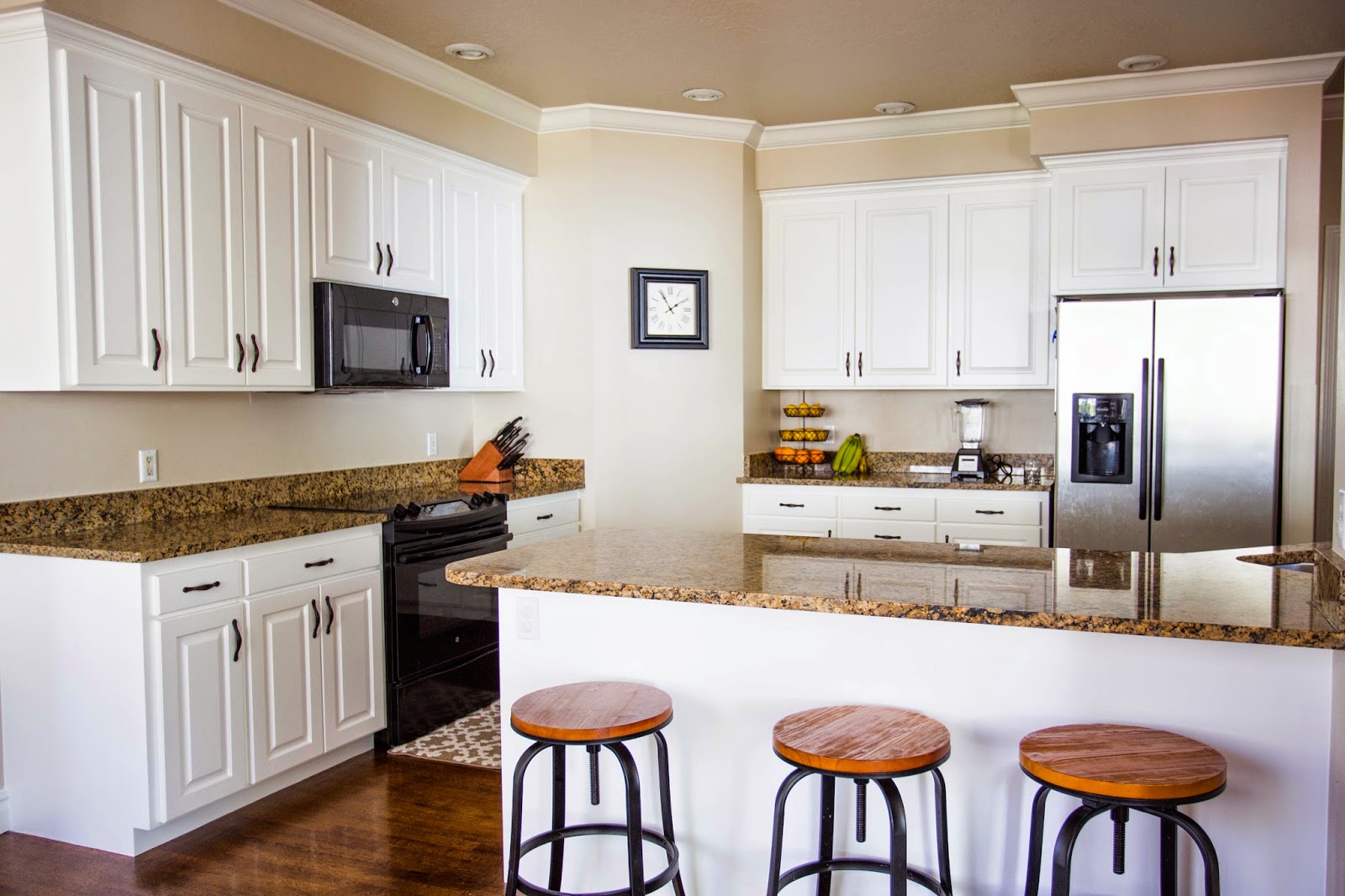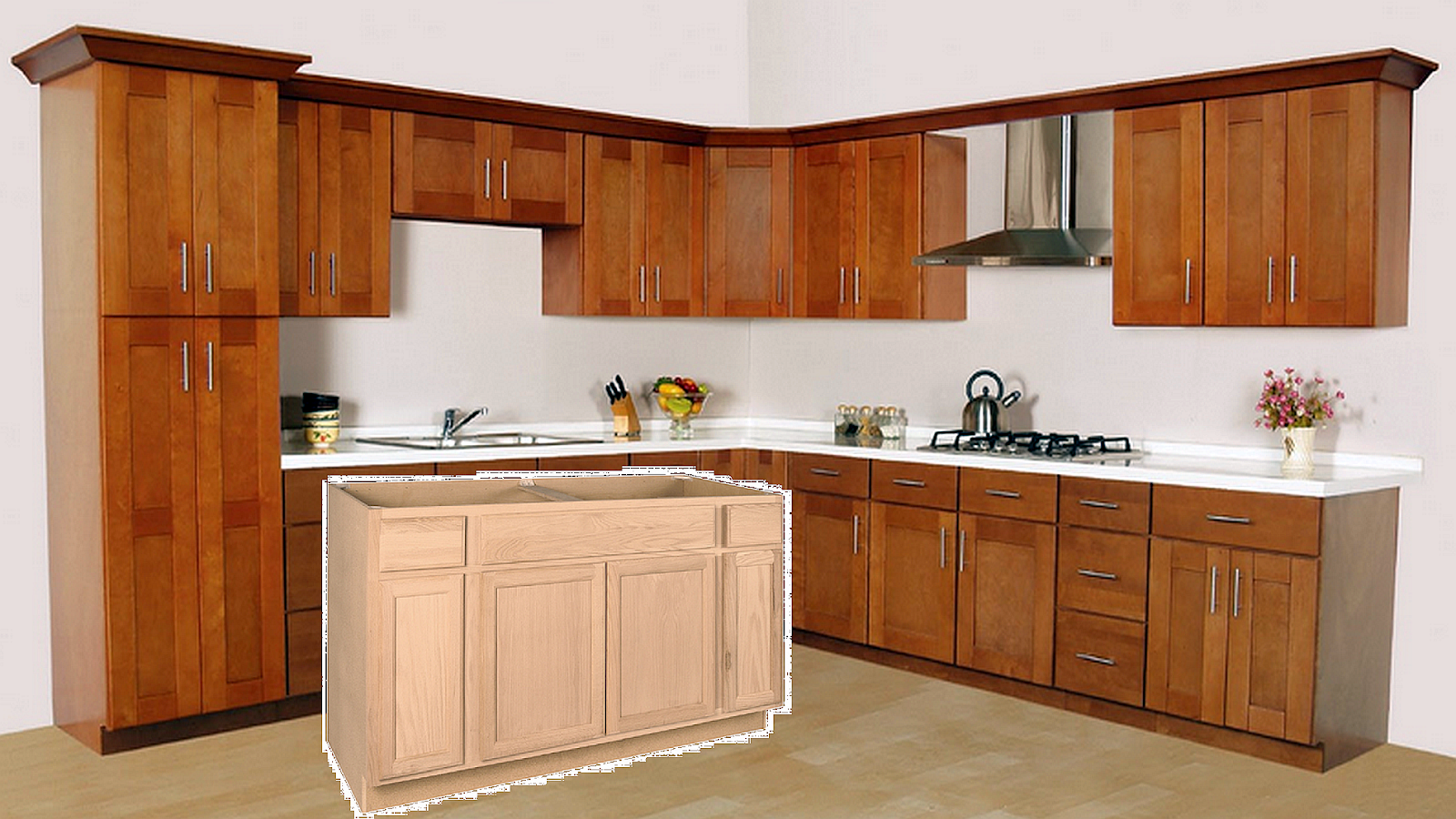Preparing Unfinished Cabinets for Paint: How Do You Paint Unfinished Kitchen Cabinets

Proper preparation is paramount for a high-quality, long-lasting paint job on unfinished kitchen cabinets. Failing to adequately clean, sand, and prime the wood will result in a less durable finish, potentially leading to peeling, chipping, and an uneven appearance. This section details the crucial steps involved in preparing unfinished cabinets for painting.
Cleaning and Prepping Unfinished Cabinets
Thorough cleaning is the first step in ensuring optimal paint adhesion. Dirt, grease, and other contaminants on the wood surface will interfere with the primer and paint, compromising the final result. The following steps should be followed meticulously:
- Remove Dust and Debris: Begin by using a tack cloth or a slightly damp cloth to wipe away all loose dust, sawdust, and debris from the cabinet surfaces.
- Degreasing: Use a quality degreaser, such as TSP (trisodium phosphate), diluted according to the manufacturer’s instructions. Apply it with a clean cloth, scrubbing gently to remove any grease or grime. Rinse thoroughly with clean water and allow the cabinets to dry completely.
- Fill Imperfections: Use wood filler to fill any gaps, holes, or imperfections in the wood. Allow the filler to dry completely and then sand it smooth.
- Caulk Gaps and Seams: Apply paintable caulk to any gaps or seams between the cabinets and surrounding surfaces. This creates a smooth, sealed surface for painting.
Primer Selection for Unfinished Wood Cabinets, How do you paint unfinished kitchen cabinets
Choosing the right primer is crucial for ensuring the paint adheres properly and provides a consistent finish. Different primers are designed for specific needs. The table below summarizes suitable primer types for unfinished wood cabinets:
| Primer Type | Description | Best Use Cases | Considerations |
|---|---|---|---|
| Oil-Based Primer | Provides excellent adhesion and sealing, especially on porous wood. Offers good stain blocking. | Knotty pine, highly absorbent woods, areas with significant imperfections. | Strong odor, longer drying time, requires mineral spirits for cleanup. |
| Sheen-Based Primer | A blend of oil and water-based, providing a balance between performance and ease of use. | Most unfinished wood types, offering good adhesion and stain blocking. | Moderate drying time and odor. |
| Water-Based Primer | Low odor, fast drying, easy cleanup with soap and water. | Unfinished wood with minimal imperfections, smoother surfaces. | May require multiple coats for optimal coverage and stain blocking. |
| Stain-Blocking Primer | Specifically formulated to prevent bleed-through from stains or knots in the wood. | Woods with significant knots, dark stains, or color variations. | May require additional coats depending on the intensity of the stain. |
Sanding Unfinished Wood Cabinets
Proper sanding is essential for creating a smooth surface that will ensure even paint application and a professional-looking finish. The process involves several steps using different grit levels:
- Start with Coarse Grit (80-100 grit): Use a random orbital sander with 80-100 grit sandpaper to remove any major imperfections, scratches, or raised grain. Sand with the grain of the wood to avoid creating swirl marks.
- Intermediate Grit (120-150 grit): Switch to 120-150 grit sandpaper to smooth out the surface further, removing any scratches left by the coarser grit. Again, sand with the grain.
- Fine Grit (180-220 grit): Use 180-220 grit sandpaper to achieve a very smooth finish. This step is crucial for a professional-looking paint job. Sand gently and evenly, always with the grain.
- Clean Thoroughly: After each sanding step, use a tack cloth or vacuum to remove all dust and debris. This prevents dust from becoming embedded in the paint.
Painting Unfinished Kitchen Cabinets

Painting unfinished kitchen cabinets offers a significant opportunity to customize your kitchen’s aesthetic and enhance its value. The process, while demanding, can yield stunning results with careful preparation and execution. Choosing the right paint and employing proper techniques are crucial for achieving a durable and professional-looking finish.
Paint Type Comparison for Kitchen Cabinets
Selecting the appropriate paint is paramount for the longevity and appearance of your cabinets. The choice between latex, oil-based, and other specialized paints depends on several factors, including desired finish, ease of application, and budget.
| Paint Type | Durability | Finish | Ease of Application |
|---|---|---|---|
| Latex | Good to excellent, depending on quality; generally more durable than in the past due to advancements in formulation. Water-clean up is a significant advantage. | Wide range available, from matte to high-gloss. Modern formulations offer excellent scrubbability. | Easy to apply, relatively low odor, and quick drying time. |
| Oil-based | Excellent durability and resistance to moisture and scratches. Offers a very hard, long-lasting finish. | Typically offers a smoother, more durable finish than latex, although achieving a truly flat finish may be challenging. High gloss is readily achieved. | More difficult to apply, requiring thinner coats, longer drying time, and solvent-based cleanup. Strong odor is a drawback. |
| Alkyd | Excellent durability, similar to oil-based but with faster drying time and easier cleanup. | Offers a wide range of finishes similar to oil-based paints. | Easier to apply than oil-based paints, offering a balance between performance and ease of use. |
Applying Paint to Unfinished Cabinets
Proper application techniques are vital for achieving a smooth, even finish free of brushstrokes and drips. Different tools offer distinct advantages and require specific techniques.
How do you paint unfinished kitchen cabinets – The following steps Artikel best practices for applying paint using brushes, rollers, and spray guns:
- Brush Application: Use high-quality brushes with fine bristles. Apply thin, even coats, working in the direction of the wood grain. Overlap each stroke slightly to avoid visible lines. For corners and edges, use an angled brush for precision.
- Roller Application: Use a high-quality roller with a nap suitable for smooth surfaces. Load the roller with paint, and apply even coats using a smooth, consistent motion. Avoid overloading the roller, as this can lead to drips and uneven coverage. Use a smaller roller for hard-to-reach areas.
- Spray Gun Application: Maintain a consistent distance from the surface, using overlapping passes to ensure even coverage. Use a low pressure setting to minimize overspray and runs. Proper ventilation is essential when using a spray gun. Cleaning the gun thoroughly is also critical.
Visual Guide to Painting Techniques
Imagine a cabinet door. First, apply a thin, even coat of primer to the entire surface, ensuring complete coverage, especially in recessed areas. Allow sufficient drying time before proceeding. Next, paint the flat surfaces using long, even strokes, either with a brush or roller. Maintain a wet edge to avoid lap marks. For corners, use a small brush or the edge of a roller to carefully apply paint, avoiding buildup. For edges, use an angled brush or carefully apply paint with the roller, paying close attention to achieve even coverage. Finally, for details such as raised panels or decorative molding, use a small brush to carefully apply paint, paying attention to detail and allowing sufficient drying time between coats. Multiple thin coats are superior to one thick coat for a smooth finish.
Finishing and Protecting Painted Cabinets

Proper finishing is crucial for achieving a durable and beautiful paint job on your kitchen cabinets. Neglecting this stage can lead to chipping, peeling, and a generally unsatisfactory result, undermining all the previous effort invested in preparation and painting. The final steps significantly impact the longevity and aesthetic appeal of your newly painted cabinets.
Multiple Coats and Drying Times
Applying multiple coats of paint is essential for achieving a smooth, even finish and ensuring adequate protection for the wood underneath. Each coat builds upon the previous one, creating a stronger, more durable surface resistant to scratches and wear. Insufficient coats will result in a thin, easily damaged finish. The drying time between coats is equally important, allowing the paint to cure properly and preventing problems such as bubbling or cracking.
- Apply the first coat of paint evenly, ensuring full coverage. Allow the paint to dry completely according to the manufacturer’s instructions; this typically ranges from 2 to 4 hours, depending on the paint type and environmental conditions (temperature and humidity).
- Once dry, lightly sand the first coat with fine-grit sandpaper (220-grit or higher). This removes any imperfections and creates a smoother surface for the subsequent coat. Wipe away any sanding dust with a tack cloth.
- Apply the second coat, following the same even application technique as the first. Again, allow the paint to dry completely according to the manufacturer’s instructions.
- For optimal durability and a superior finish, a third coat may be applied, following the same sanding and drying process as before. This is particularly beneficial for high-traffic areas or cabinets prone to moisture.
Cabinet Protection Methods
Protecting your newly painted cabinets from moisture and wear is paramount to preserving their appearance and extending their lifespan. Several methods can provide this protection, each with its own advantages and disadvantages. Choosing the right method depends on factors such as the level of protection needed and the desired finish.
- Polyurethane: A popular choice, polyurethane is a durable, clear coat that provides excellent protection against moisture, scratches, and abrasion. It’s available in various sheens, from matte to high-gloss, allowing for customization to match your desired aesthetic. Applying multiple thin coats is recommended for optimal results, allowing each coat to dry thoroughly before applying the next.
- Lacquer: Lacquer offers a hard, durable finish that dries quickly. However, it can be more challenging to apply evenly and requires proper ventilation due to its strong fumes. Like polyurethane, multiple thin coats are recommended.
- Epoxy: Epoxy coatings offer superior protection against moisture and chemicals, making them ideal for areas prone to spills or high humidity. However, they are more difficult to apply and require specialized equipment for optimal results.
